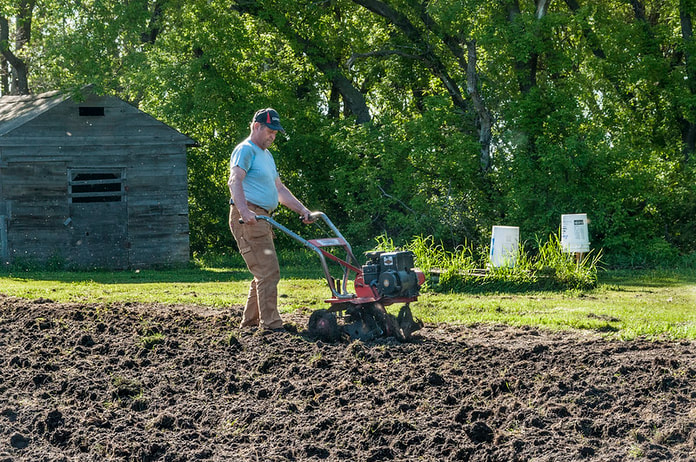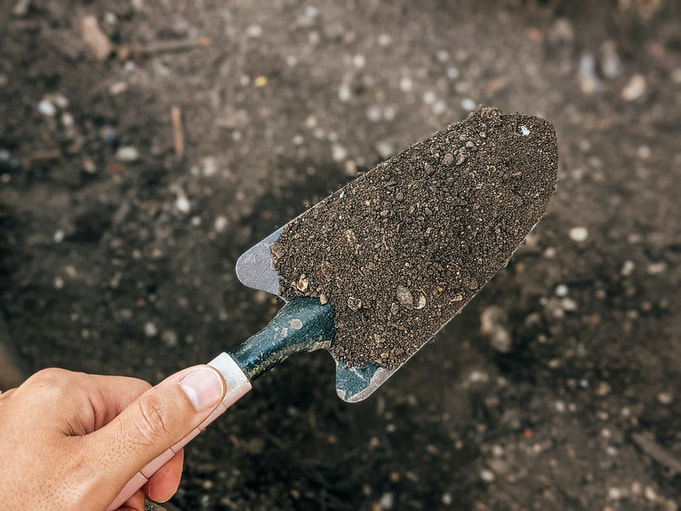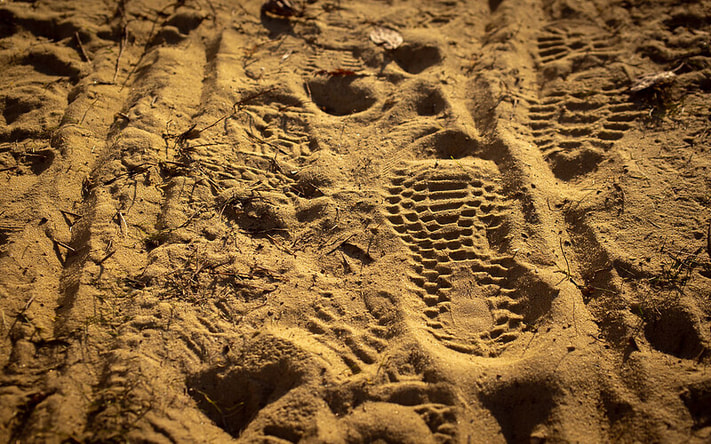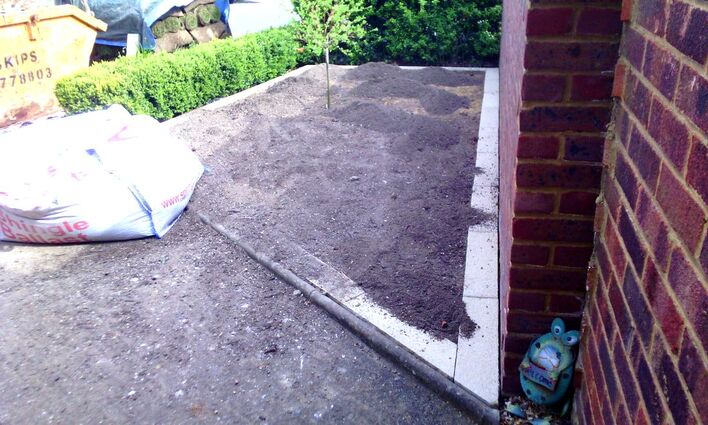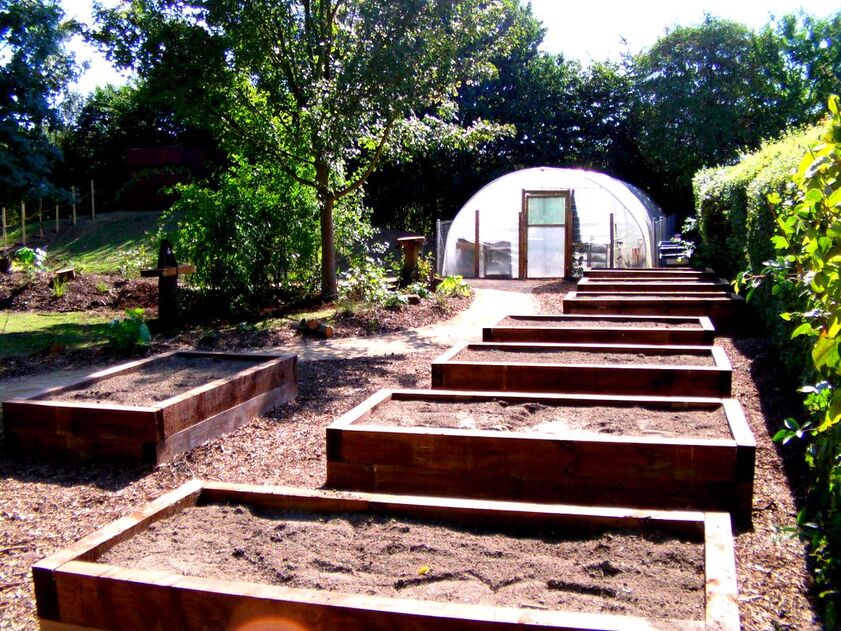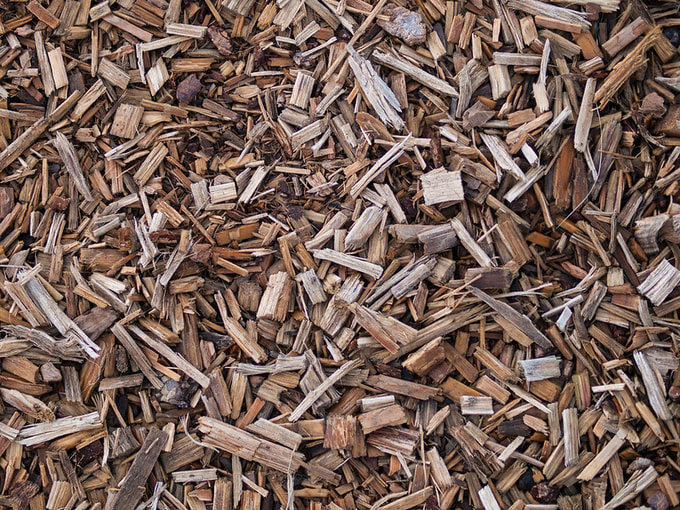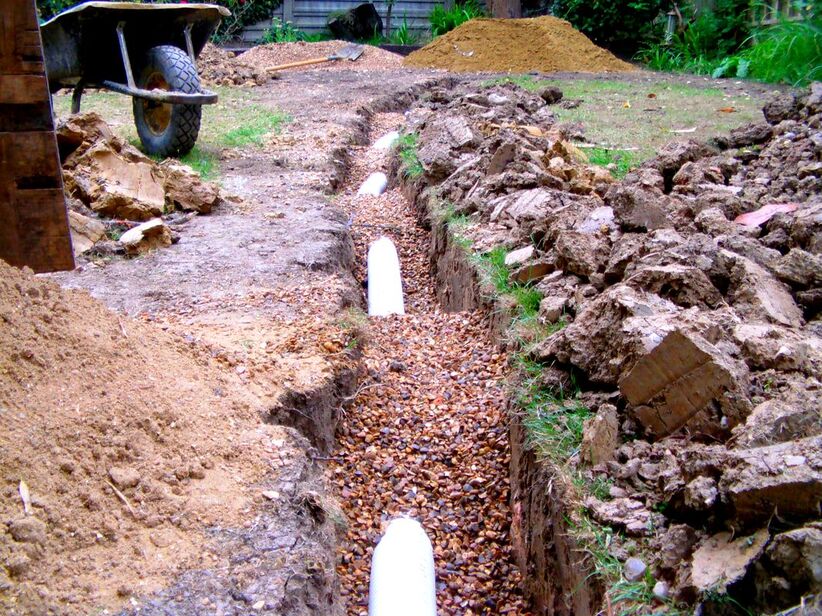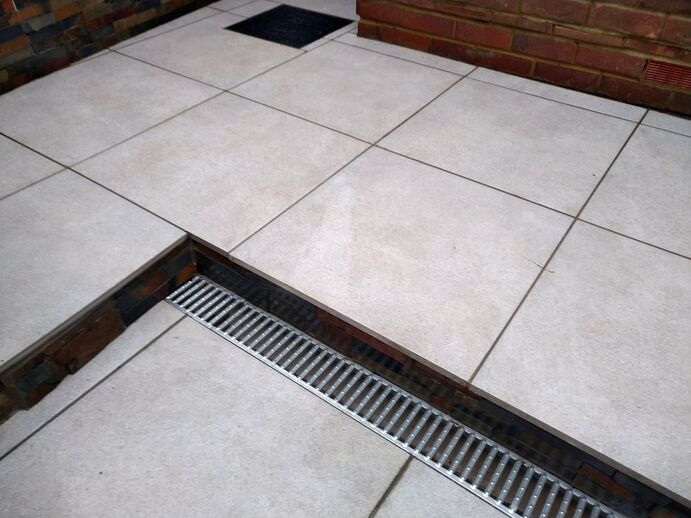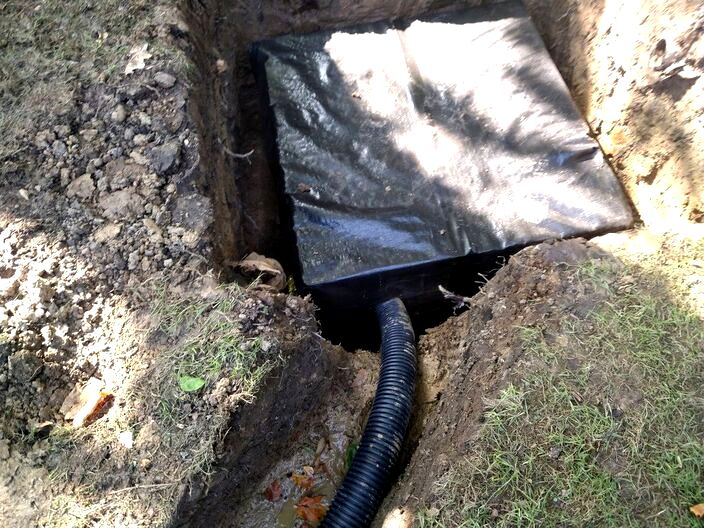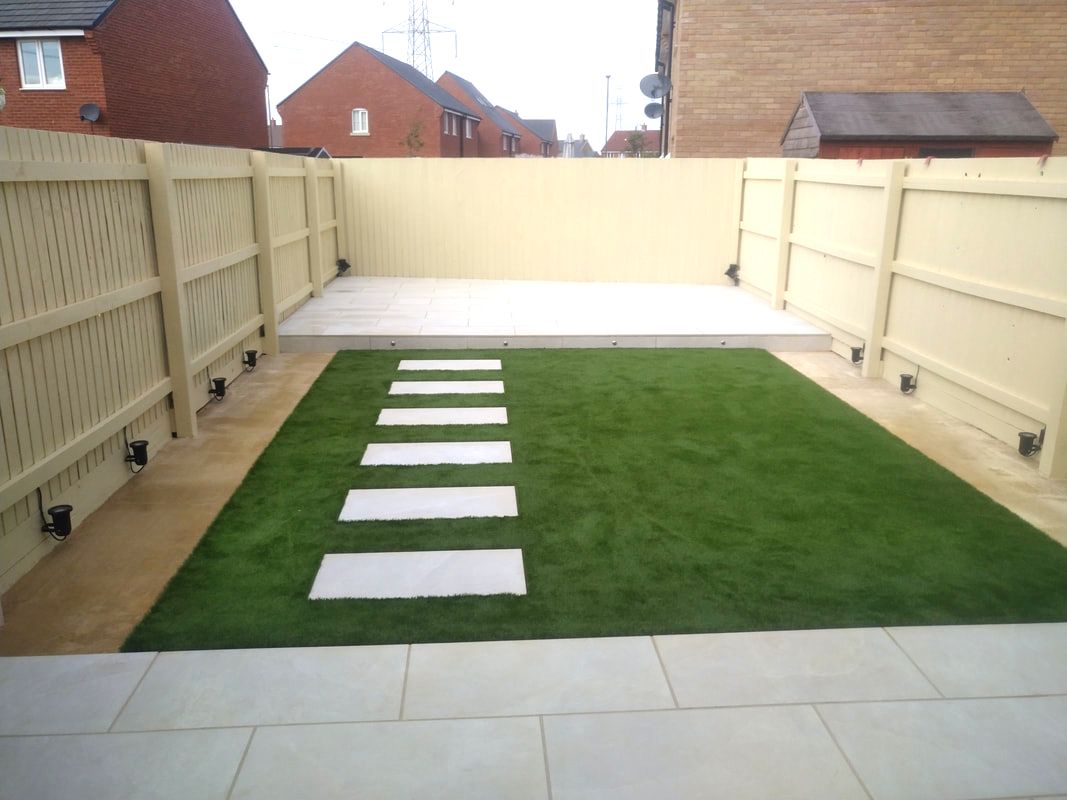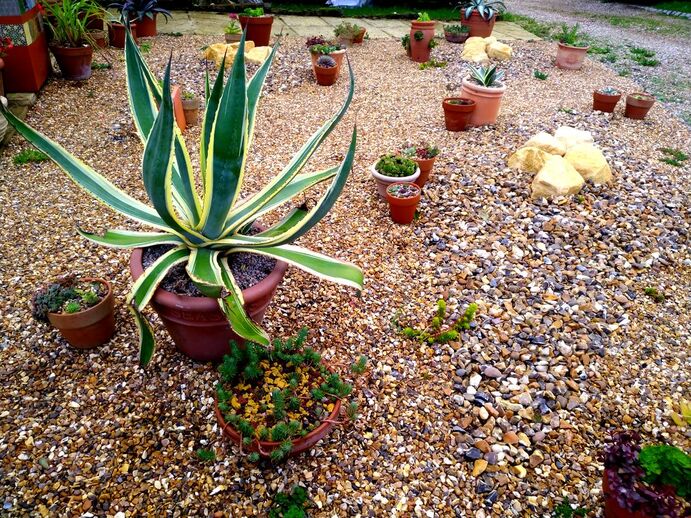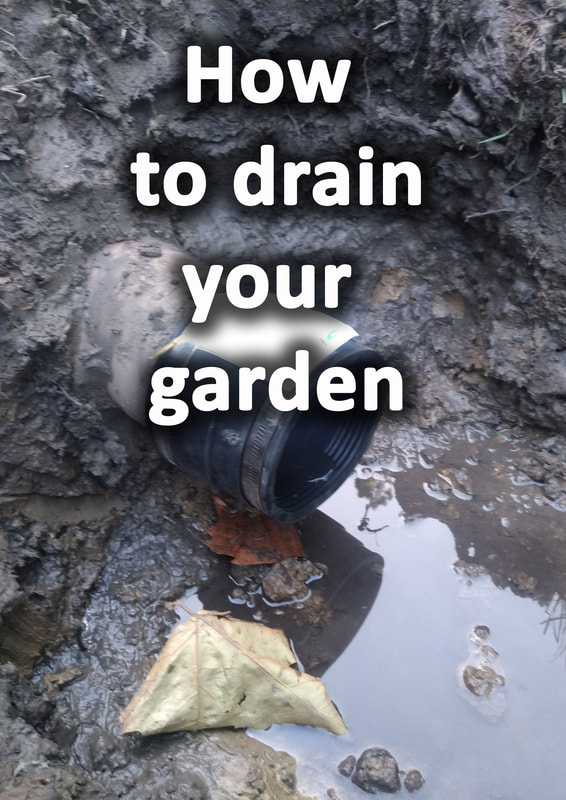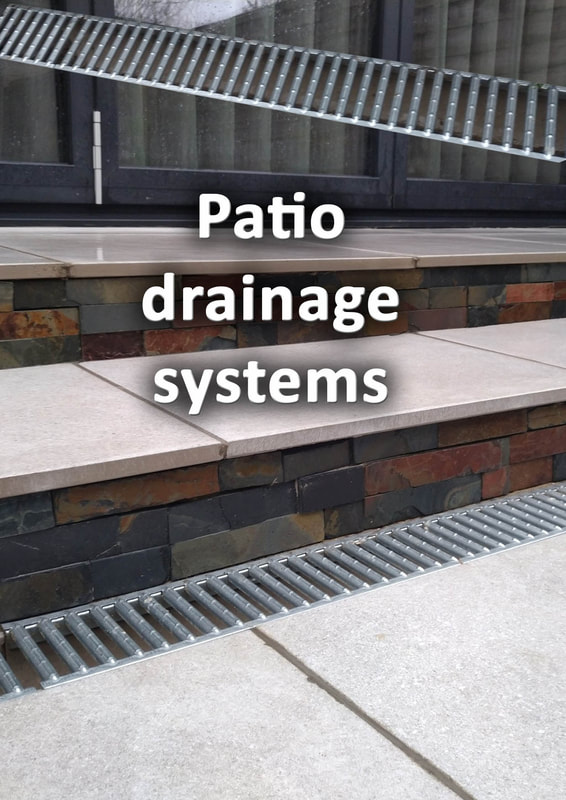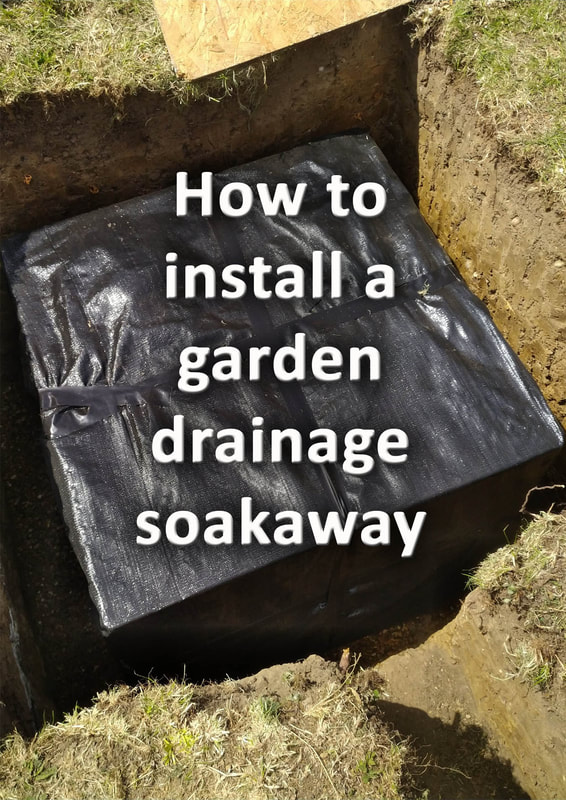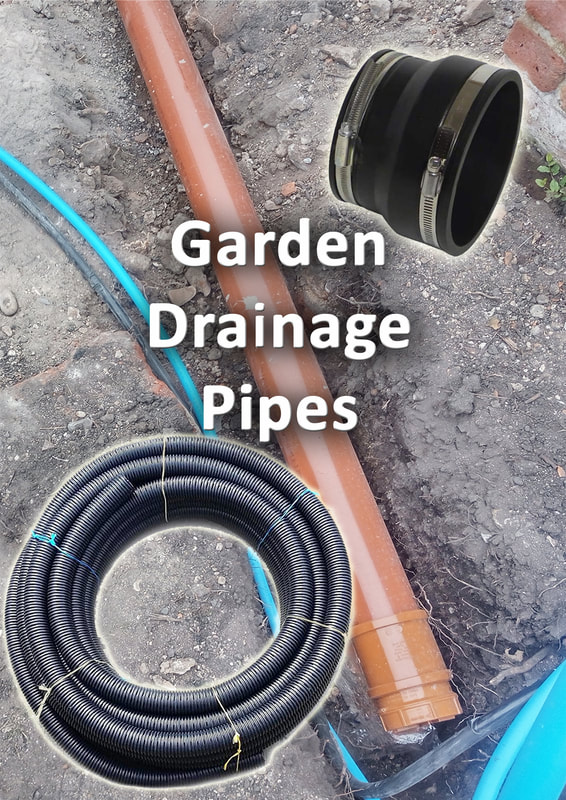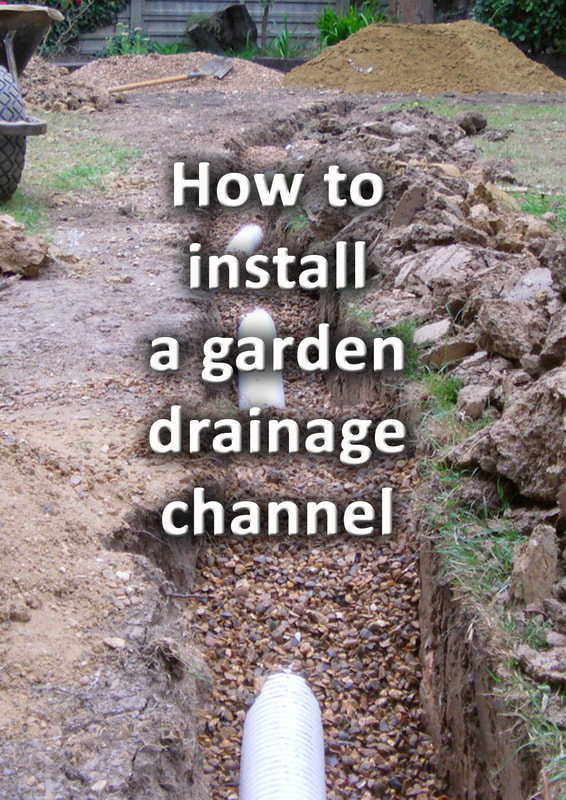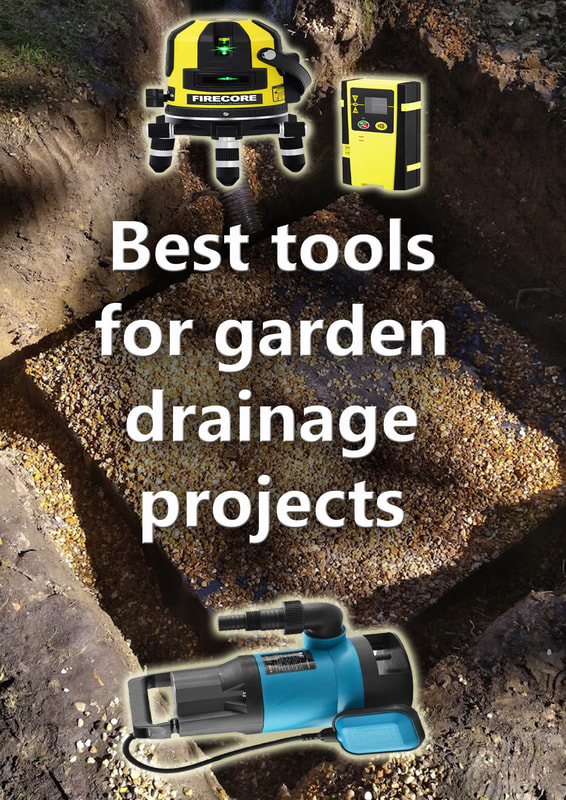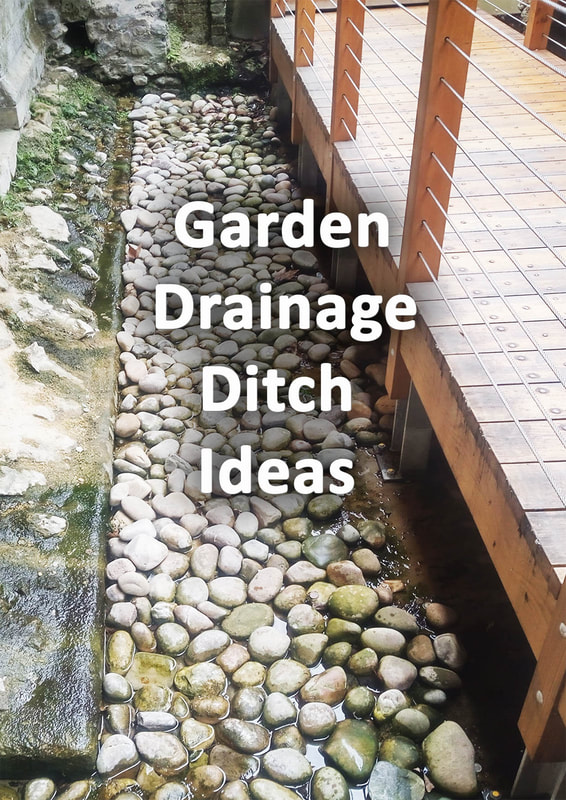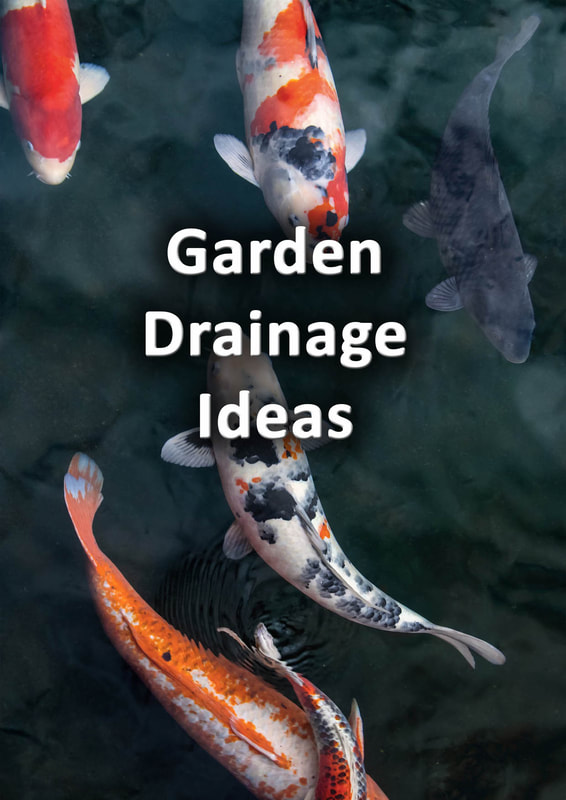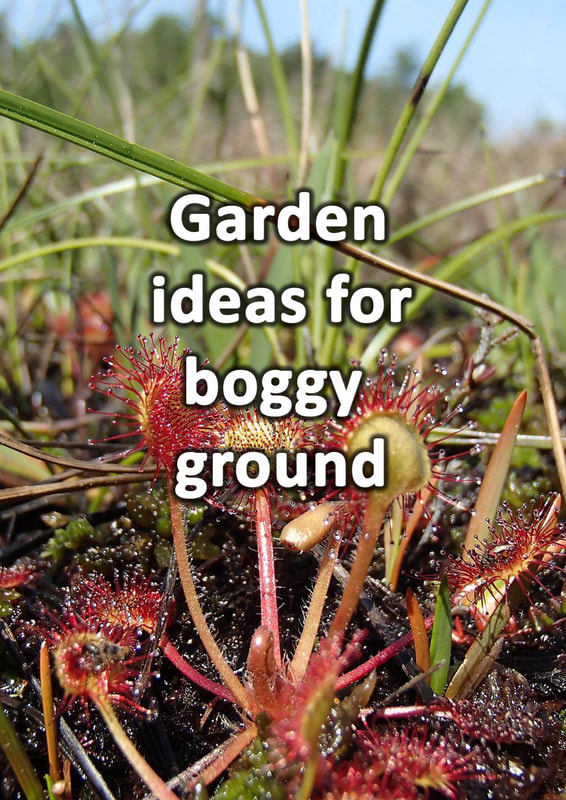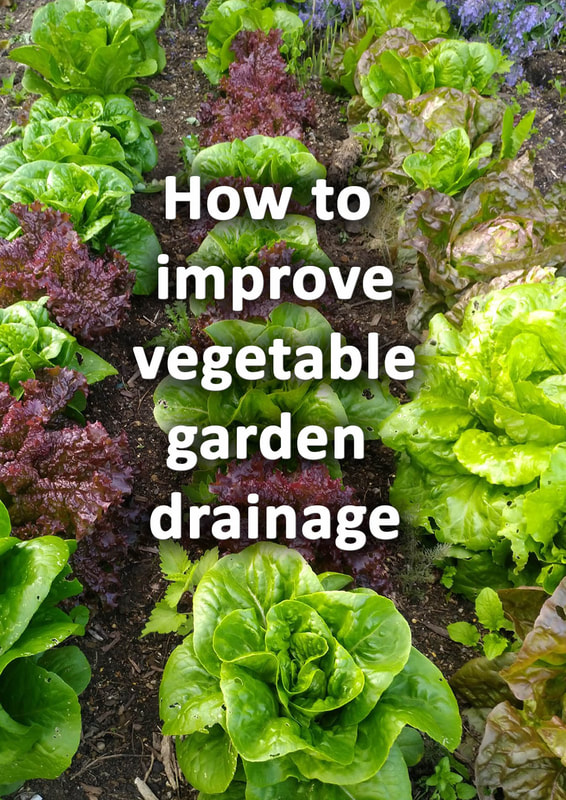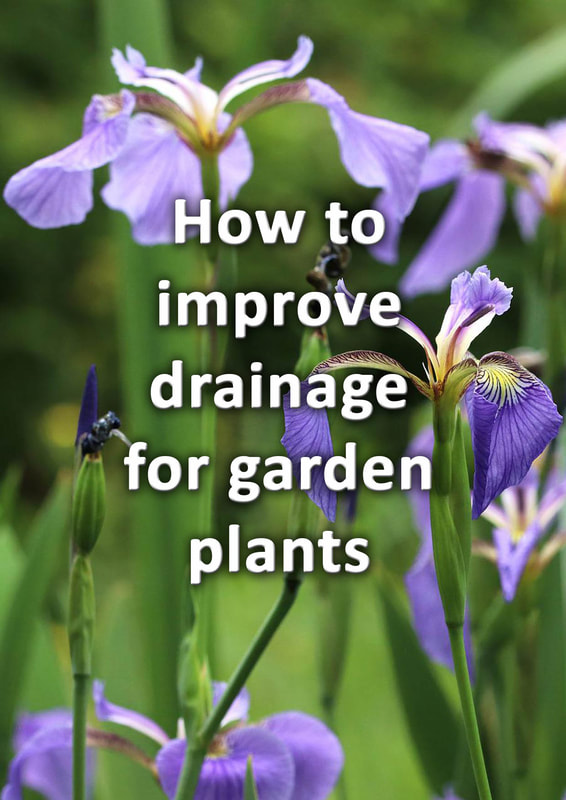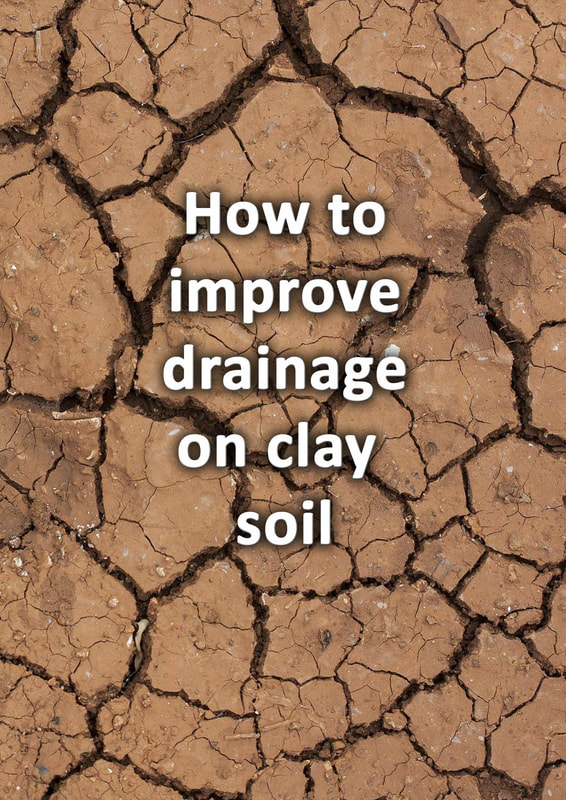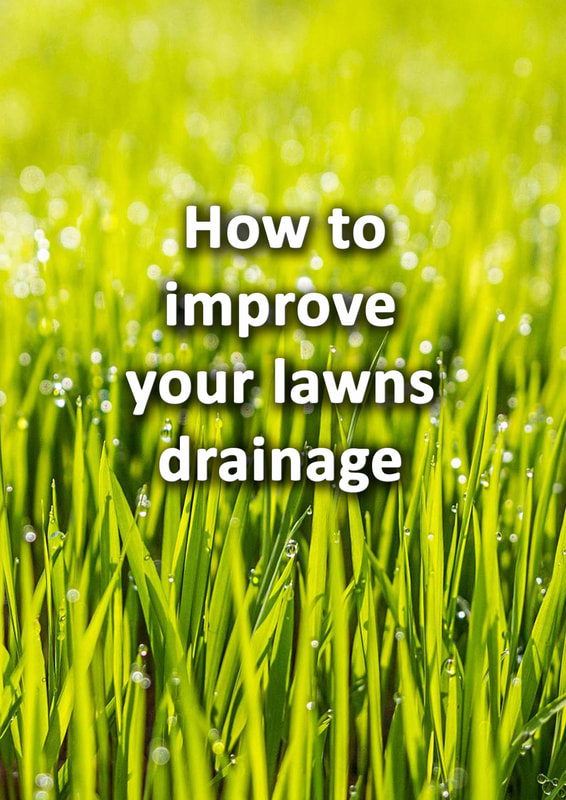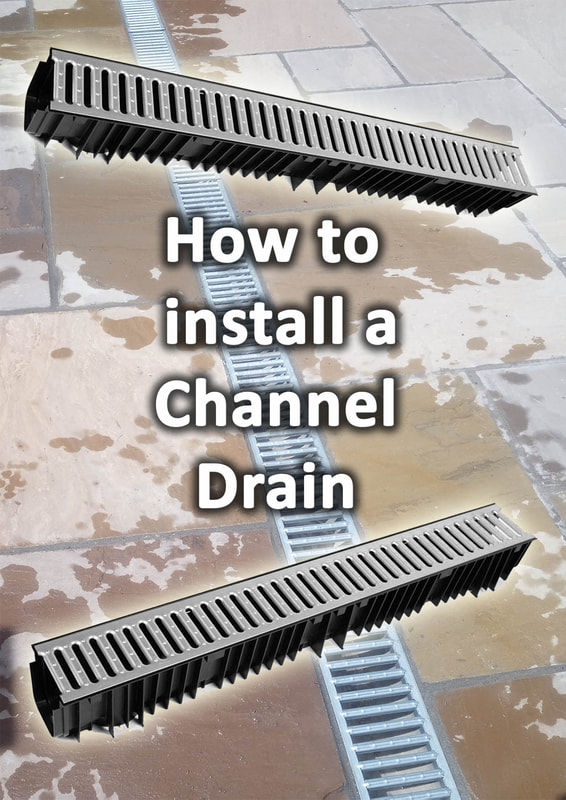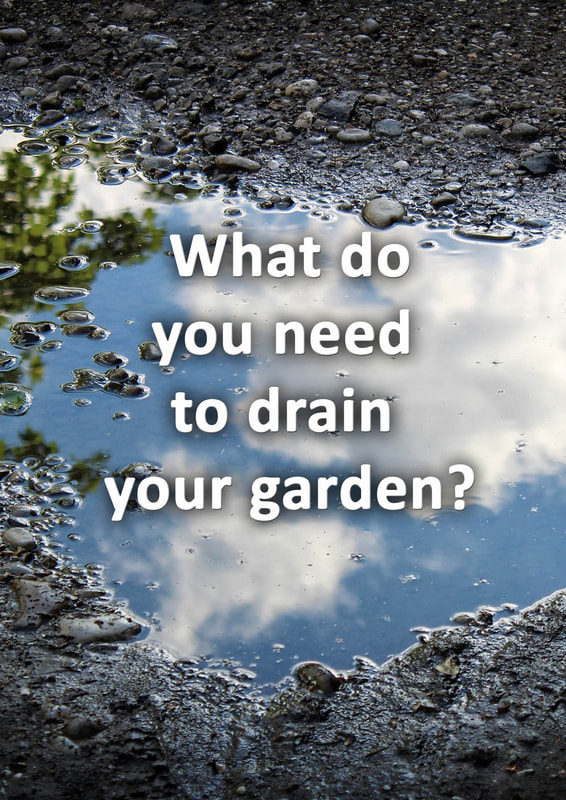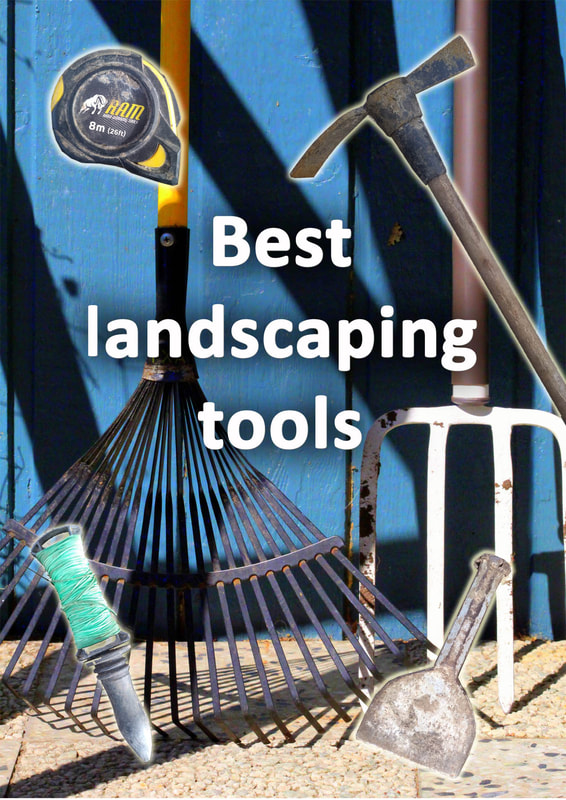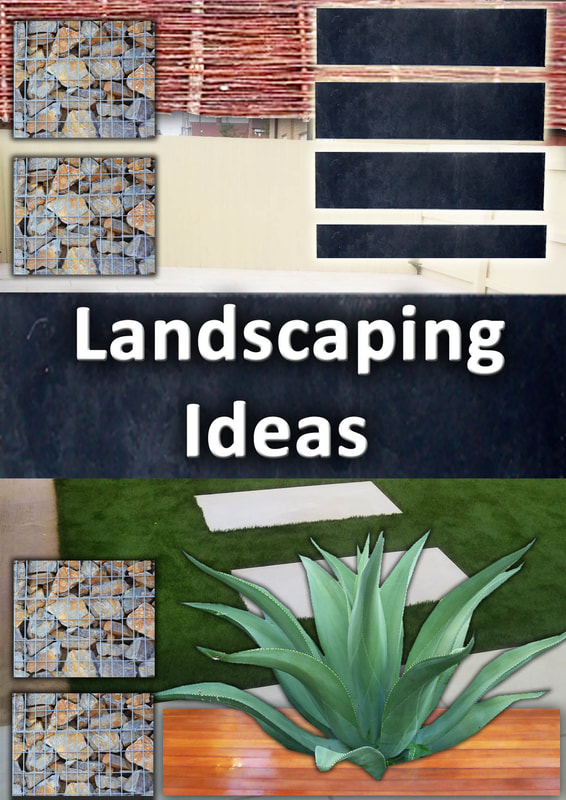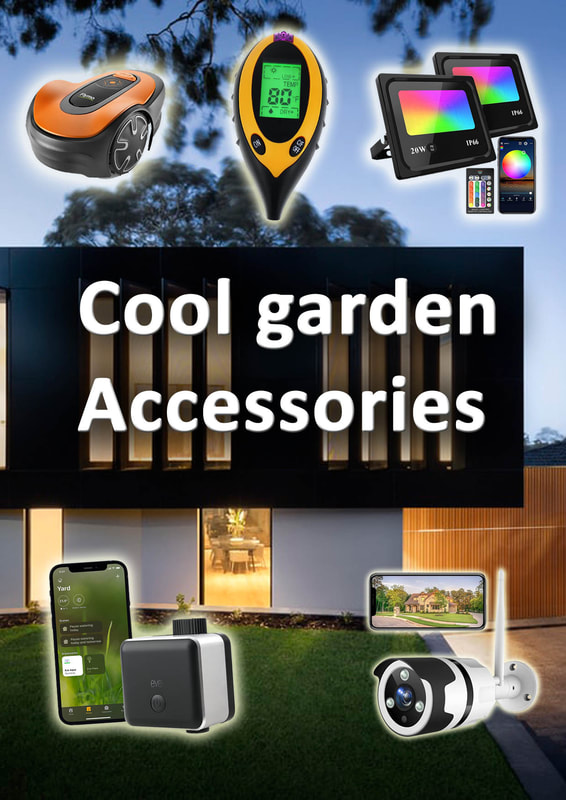|
This article contains affiliate links
1. Relieve garden compaction
One of the biggest causes of poor garden drainage is compaction. When soil is subject to heavy use and damp conditions soil particles become compacted. This leads to the soil to becoming capped and impervious. Such conditions typically leads to excessive run off and standing water in times of heavy rain. One of the best ways of alleviating compaction is to rotovate the soil and mix in plenty of sharp sand and organic material. 2. Improve your garden soilGeneral soil improvement is a sure way to improve garden drainage. Natural topsoil is made up of a combination of rock particles, organic matter and microscopic life. Depending on your local geology your soil may or may not be good quality or well drained. Whatever your soils condition garden drainage can be enhanced by working in organic matter such as compost. Free draining aggregates such as sharp sand and grit can also help to improve soil and increase drainage. 3. Create a free draining layer
When it comes to gardens drainage it is rare for a whole garden to be waterlogged. Normally it is one specific zone which suffers from damp conditions. This is particularly the case with undulating gardens and clay soil. One of the best ways to deal with this is by creating a free draining layer. This is common practice on professional sports pitches within stadiums. A layer of free draining material such as sharp sand is spread a couple of inches under the surface. This gives excess water a channel of escape from a particular boggy area. The drainage layer helps to distribute moisture evenly throughout the ground. 4. Re-level your gardenOne of the most common reasons for garden drainage problems is levels. Very often gentle gradients channel surface water into specific areas. These can become saturated and boggy in times of rain. The best scenario for perfect garden drainage is an even gradient. This way, surface water is unable to collect or be trapped in any particular location. The most effective way to re-level your garden is by installing level edging to the sites perimeter. The central ground can then be levelled perfectly between the level edgings. A straight edge or string line can allow you a method of checking your levels as you work. 5. Raise your gardens levelA very common scenario in gardens that do not drain well is that surrounding properties are higher. If the gardens surrounding your home have a higher level, water will run to the lowest point. This is even the case if you are only lower by only a couple of centimetres. In such a case it is probably a good idea to raise you gardens level. This can be done by installing perimeter, retaining edges and filling your garden with free draining topsoil. There is no need to raise it to extreme heights just enough to meet surrounding gardens levels. This will enable excess water to be absorbed gradually by surrounding properties. 6. Create raised beds
Many gardens with poor drainage simply do not have enough quality topsoil to absorb excess rainwater. Today excessive hard surfaces and a reduction in traditional gardening have led to less water absorption. Gardens have become subject to extensive surfacing and minimalist design themes. These problems do not recognise gardens boundaries and are typically localised. The more impermeable surfaces an area has the greatest chance the surrounding soil will become saturated. A great way to address this is by installing raised garden beds. These can provide well drained growing borders at a desirable growing height. When filled with good quality topsoil they can help to draw out excessive water from lower ground levels. 7. Mulch with bark chippings
Mulching your borders with bark chippings is well known for suppressing garden weeds and protecting plant roots. Furthermore mulching can also directly help to improve a gardens drainage. Bark chippings slowly degrade over time invigorating soil ecology. This leads to more soil dwelling creatures which help to form air pockets and improve the soils structure. This leads to better quality topsoil which greatly improves garden drainage. Mulch can also prevent soil from becoming too compacted and allow surface water to evaporate easily. 8. Create a drainage channelMost of the time solutions to poor garden drainage involve two things; transporting water away from a given area and providing water somewhere to go. Garden drainage channels can provide both of these making them of the best garden drainage solutions. These consist of linear excavations which house perforated drainage pipes. Channels are then backfilled with free draining aggregates, lined with filtration membrane and capped with soil. These free draining channels allow hydraulic pressure in the ground to seep into the drainage channel. Ground water can then be slowly drained from a given area; such systems are particularly affective for lawn drainage. Drainage channels can directly feed greater drainage networks, soakaways or created on such a scale they act as linear soakaways. 9. Give water somewhere to go
Any rain water which cannot be absorbed by the ground naturally will lead to boggy conditions. One of the very best ways to deal with excess water is providing a means for it to escape. I always ask a fundamental drainage question; where does the water naturally want to go? Look at your gardens levels and landform, where would water naturally run too? Once you have identified the lowest point you will have to provide some sort of a collection vessel. This could be a garden drain, wetland swale or soakaway. If local drainage policy does not allow you to connect to the network, you will typically need to install a soakaway. 10. Install a soakawaySoakaways are the most efficient ways of getting rid of excess storm water on site. Traditionally soakaways were simply excavations filled with broken bricks and builder’s rubble. The problem with these basic soakaways is they soon became silted up. Furthermore the majority of the excavation was filled with masonry materials providing less water capacity. This meant they soon became overwhelmed during periods of heavy rain. Today soakaways are made up of drainage crates which consist of a rigid plastic structure. These drainage crates hold a maximum volume of water of up to 97% of the structure. This makes them far superior to old rubble systems. Soakaways are typically built to a size of 1m cube, this provides adequate drainage capacity for most garden, drainage, requirements. Why not read our step by step guide on how to install a garden soakaway here. 11. Artificial grassArtificial grass can be a way of replacing a boggy, garden lawn with a firm and robust surface. However it is actually false that installing an artificial lawn will improve your gardens drainage. It will however make the artificial lawn itself sturdy and robust as it will have a secure base. Artificial lawn actually needs to have a base not that different from a new patio. This can actually reduce the ability of your garden to absorb excess storm water. Therefore for an artificial lawn to replace a boggy lawn successfully it is advised to incorporate a drainage system. This could be drainage grates or drainage channels plumbed into a nearby soakaway. With such an accompanying drainage strategy, artificial lawn is a great way to replace a boggy lawn. 12. Gravel surfacesGravel surfaces unlike most surfaces allow rain water to permeate into the ground. This reduces water runoff overwhelming the soils natural absorption capacity. Gravel surfaces also allow water to pass through them easily reducing standing water in times of heavy rain. Gravel surfaces can be laid over drainage channels and collect excess water from the surrounding landscape. Gravel patios, driveways and pathways are a great permeable alternative to hard surfaces and help improve your gardens drainage. Garden drainage services & drainage contractors in Buckinghamshire
Buckinghamshire landscape gardeners are experts in garden drainage and provide a number of garden drainage solutions. Our garden drainage services include;
Our garden drainage services cover most of Buckinghamshire including:
Thank you for reading our article on 12 ways to improve your gardens drainage. We have included many other in depth articles on how to improve your gardens drainage below.
How To Improve Your Garden Drainage (housebeautiful.com)
Eight Ways to Improve Your Garden’s Drainage | lady.co.uk How to improve garden drainage | Drainage Superstore Help & Advice
'As an Amazon associate I earn from qualifying purchases'
1 Comment
It really helped when you said that the soil that we have may or may not be of good quality when it comes to drainage, and it can help to have sharp sand and grit when you have the latter. I will keep that in mind and hire sand dumping services if needed in our home's backyard. We should probably hire a landscape professional to help with that aspect and see if we actually need to get additional materials like those in order for the plants to grow in our backyard.
Reply
Leave a Reply. |
The Author
|
Landscaping services across Buckinghamshire, Amersham, Aylesbury & High Wycombe
Hyde Heath, Amersham, Buckinghamshire |
|

